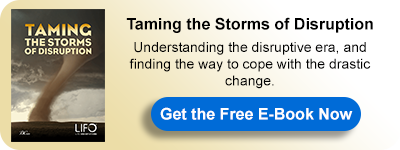Six Forces Driving Disruption
Driving Force 1: The Battle for Talent Will Intensify
When polled, CEOs admit that uncertainty and personnel management difficulties are affecting corporate growth. Moving forward, the “War For Talent” will demand more attention. Positions that cannot be filled, applicants who lack the essential abilities, and a reduction in employee engagement and work ethic are all manifestations of this mega-trend. Meanwhile, skilled professionals — mostly Baby Boomers — are retiring at a rate of 10,000 per day, taking their knowledge with them. As a result, even if the economy softens, talent rivalry will be a defining trend in the future. For a competitive advantage, smart businesses will rebuild and rethink their recruitment, onboarding, hiring, pay, culture, and retention tactics.
Driving Force 2: Abundancy
Abundancy refers to an underutilized asset with untapped worth. Airbnb took advantage of this by creating an online marketplace for unused space in places like vacation homes and shared rooms.
Driving Force 3: Millennials; The Most Powerful Generation Z
Not only are Millennials the majority generation in the workplace (with 92 million members), but they are also the most potent generational cohort in the marketplace, outspending Generation X and Boomers in terms of purchasing power, economic impact, and political clout. The oldest Millennials are in their mid-30s and are busy getting married, establishing families, starting businesses, purchasing homes, saving for retirement, and repaying their college loans. Millennials are multi-ethnic and multi-racial, open-minded, and tech-savvy. They’re not just boycotting cable television; they’re boycotting businesses, brands, and workplaces that aren’t responding to their demands. With the jobless rate at a 49-year low, Millennials are already seeking to change jobs since 2019 and ongoing as they seek greater compensation and career progression.
Driving Force 4: Redundancy
“Redundancy” refers to layers of redundant roles and processes. Botsman cites Vandebron, a company located in the Netherlands that saw an opportunity to sidestep utility companies by connecting small-scale energy producers with clients who wanted green energy.
Driving Force 5: Putting Artificial Intelligence into Action
All technologies go through a period of development before they go to a period of application. How might we take advantage? How might competitors gain an advantage by moving first with this trend? Examples: Real estate broker Coldwell Banker is experimenting with A.I. to target classes of likely buyers for a specific property. Fidelity is finding ways to apply artificial intelligence, computer algorithms, and voice recognition software to the hidebound world of money management and investing. Forward-thinking companies will start by automating routine office tasks like accounting and billing.
Driving Force 6: Complexity
Complexity uses and implements different ways to simplify difficult and stressful client experiences. Peer-to-peer platforms like TransferWise and CurrencyFair, which have stepped in to improve user experiences by removing the complexity of currency swaps, are disrupting this industry.
1Forbes, 25 Jan 2019, Robert Tucker, Six Driving Forces of Change that will change 2019 and beyond, Accessed 31 Dec 2021, https://www.forbes.com/sites/robertbtucker/2019/01/25/six-driving-forces-of-change-that-will-shape-2019-and-beyond/?sh=50952499107a In the Black, 1 May 2015, The Five Key Drivers of disruption, Accessed 31 Dec 2021, https://www.intheblack.com/articles/2015/05/01/the-five-key-drivers-of-disruption
For more about this topic, download our latest book "Taming The Storms Of Disruption" for FREE:
